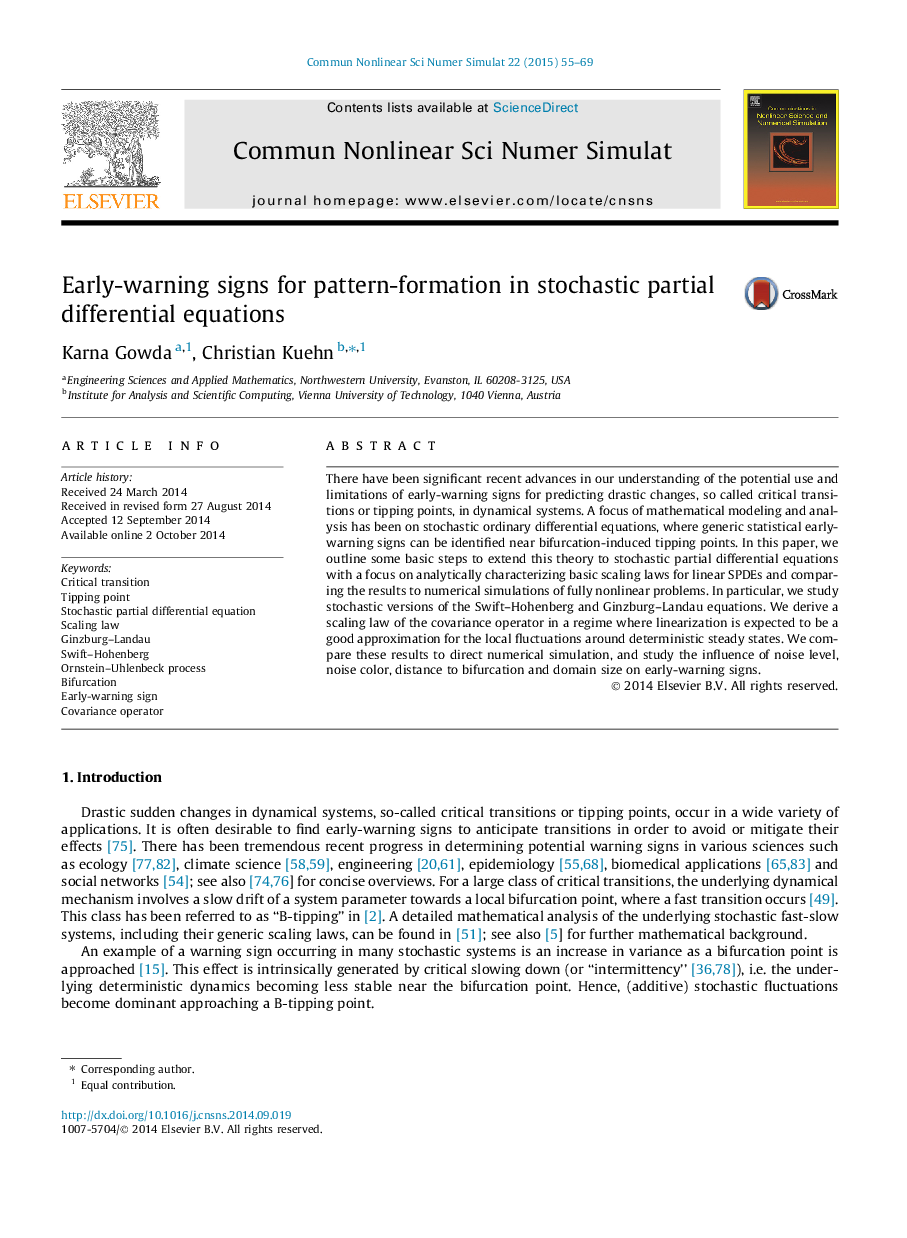| Article ID | Journal | Published Year | Pages | File Type |
|---|---|---|---|---|
| 7155553 | Communications in Nonlinear Science and Numerical Simulation | 2015 | 15 Pages |
Abstract
There have been significant recent advances in our understanding of the potential use and limitations of early-warning signs for predicting drastic changes, so called critical transitions or tipping points, in dynamical systems. A focus of mathematical modeling and analysis has been on stochastic ordinary differential equations, where generic statistical early-warning signs can be identified near bifurcation-induced tipping points. In this paper, we outline some basic steps to extend this theory to stochastic partial differential equations with a focus on analytically characterizing basic scaling laws for linear SPDEs and comparing the results to numerical simulations of fully nonlinear problems. In particular, we study stochastic versions of the Swift-Hohenberg and Ginzburg-Landau equations. We derive a scaling law of the covariance operator in a regime where linearization is expected to be a good approximation for the local fluctuations around deterministic steady states. We compare these results to direct numerical simulation, and study the influence of noise level, noise color, distance to bifurcation and domain size on early-warning signs.
Keywords
Related Topics
Physical Sciences and Engineering
Engineering
Mechanical Engineering
Authors
Karna Gowda, Christian Kuehn,
